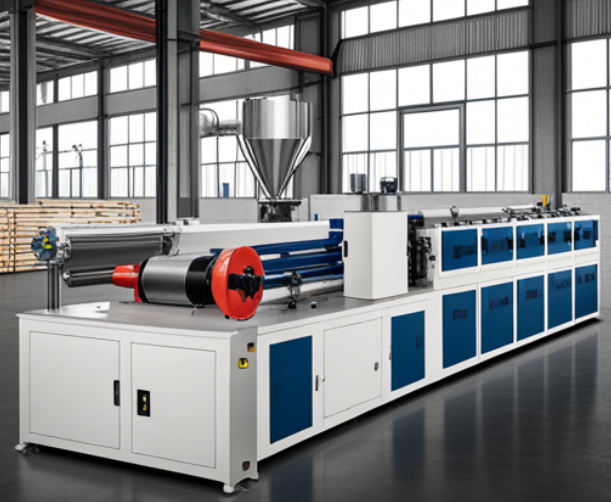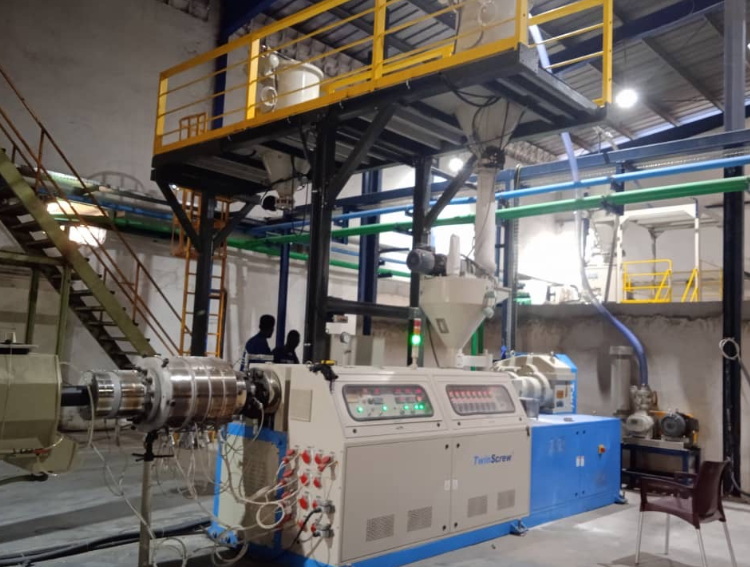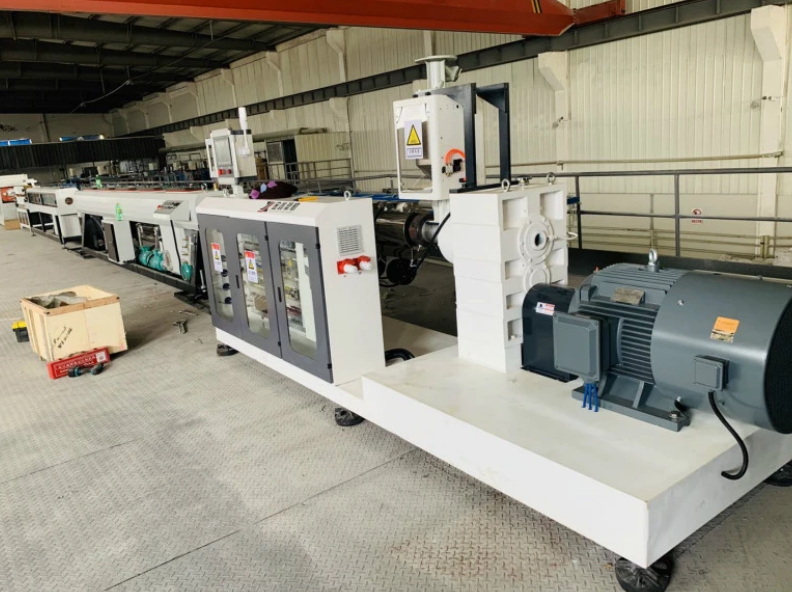Content Menu
● Understanding Pipe Extrusion
>> Key Components of a Pipe Extrusion Line
● Benefits of Investing in a Pipe Extrusion Production Line
>> 1. Enhanced Efficiency
>> 2. Consistent Quality
>> 3. Cost Savings
>> 4. Versatility
>> 5. Sustainability
● Applications of Pipe Extrusion
● Factors to Consider When Investing
● The Technology Behind Pipe Extrusion
● Innovations in Pipe Extrusion Technology
>> Smart Manufacturing Integration
>> Advanced Materials Processing
>> Energy Efficiency Improvements
● Advanced Pipe Extrusion Techniques
>> Co-Extrusion
>> Foam Core Extrusion
>> Reinforced Pipe Extrusion
● Conclusion
● FAQ
>> 1. What types of pipes can be produced using an extrusion line?
>> 2. How does automation impact pipe extrusion?
>> 3. What maintenance is required for a pipe extrusion line?
>> 4. Can an extrusion line be customized?
>> 5. What are the energy-saving features available in modern extrusion lines?
● Citations:
In today's competitive manufacturing landscape, investing in a "pipe extrusion production line" is not just a choice but a necessity for businesses looking to enhance productivity, reduce costs, and meet the ever-increasing demand for high-quality pipes. This article explores the myriad benefits of investing in such a production line, the technology behind it, and the factors to consider when making this investment.

Understanding Pipe Extrusion
"Pipe extrusion" is a manufacturing process that involves melting plastic materials and forcing them through a die to create continuous pipe profiles. This method is widely used for producing various types of pipes made from materials such as PVC (Polyvinyl Chloride), PE (Polyethylene), and PP (Polypropylene). The process ensures that pipes have consistent dimensions and properties, which are crucial for their performance in different applications.
Key Components of a Pipe Extrusion Line
A typical "pipe extrusion production line" consists of several critical components:
- Extruder: The heart of the operation, where raw materials are melted and shaped.
- Die: Shapes the molten material into the desired pipe profile.
- Calibration Unit: Ensures the pipe maintains its dimensions as it cools.
- Cooling Tanks: Cool the extruded pipe to solidify its shape.
- Haul-off Unit: Pulls the pipe through the line at a controlled speed.
- Cutter: Cuts the finished pipe into specified lengths.
Benefits of Investing in a Pipe Extrusion Production Line
Investing in a "pipe extrusion production line" offers numerous advantages that can significantly impact your manufacturing efficiency and profitability.
1. Enhanced Efficiency
Modern extrusion lines are designed for high efficiency. They automate many processes that were previously manual, reducing labor costs and minimizing human error. This automation leads to faster production cycles, allowing manufacturers to meet increasing market demands without compromising quality.
2. Consistent Quality
With advanced control systems, modern extrusion lines maintain strict parameters for temperature, pressure, and speed. This consistency results in high-quality pipes that meet industry standards and customer expectations.
3. Cost Savings
While the initial investment in a pipe extrusion production line can be substantial, the long-term cost savings are significant. Reduced labor costs, lower material waste, and increased production output contribute to improved profitability over time.
4. Versatility
Today's extrusion lines are highly versatile, capable of producing various pipe sizes and materials. This adaptability allows manufacturers to respond quickly to changing market demands and customer preferences.
5. Sustainability
Investing in modern extrusion technology often includes features that promote sustainability. For example, energy-efficient machinery reduces energy consumption, while advanced recycling options minimize waste.

Applications of Pipe Extrusion
The versatility of pipe extrusion production lines allows them to cater to various industries:
- Construction Industry: PVC and PE pipes are widely used for plumbing, drainage, and water supply systems due to their durability and corrosion resistance.
- Agriculture: PE pipes are commonly used for irrigation systems because of their flexibility and ability to withstand harsh environmental conditions.
- Oil and Gas Industry: PP and PE pipes transport liquids and gases under pressure, offering excellent chemical resistance.
- Telecommunications: HDPE pipes protect underground cables from environmental damage.
Factors to Consider When Investing
When considering an investment in a pipe extrusion production line, several factors should be taken into account:
- Production Capacity: Assess your current and future production needs to choose a line that can meet your demands.
- Material Compatibility: Ensure the line can handle the specific materials you plan to use (e.g., PVC, PE).
- Automation Level: Higher automation levels can lead to greater efficiency but may require more sophisticated technology.
- Maintenance Needs: Consider the maintenance requirements of the equipment to minimize downtime.
- Supplier Support: Choose suppliers who offer robust support services, including training and spare parts availability.
The Technology Behind Pipe Extrusion
The technology involved in pipe extrusion production lines has evolved significantly over recent years. Key advancements include:
- Smart Control Systems: These systems allow for real-time monitoring of production parameters, ensuring optimal performance and quality control.
- Energy-Efficient Designs: New machinery designs focus on reducing energy consumption while maintaining high output levels.
- Advanced Cooling Techniques: Improved cooling methods ensure that pipes maintain their shape and quality during production.
Innovations in Pipe Extrusion Technology
Recent innovations have further enhanced the capabilities of pipe extrusion lines:
Smart Manufacturing Integration
The integration of smart technology has revolutionized pipe extrusion processes. Sensors monitor parameters such as temperature and pressure in real-time, allowing for immediate adjustments. This not only improves product quality but also reduces waste by ensuring optimal material usage[3][5].
Advanced Materials Processing
Modern extruders can handle various materials with different properties. For instance:
- Single-Screw Extruders: Ideal for straightforward tasks like PVC pipe production.
- Twin-Screw Extruders: Offer enhanced control over material flow and mixing, suitable for complex applications like multilayer pipes[2][9].
This flexibility enables manufacturers to produce a wider range of products tailored to specific applications.
Energy Efficiency Improvements
Energy-efficient designs have become a hallmark of modern extrusion lines. Features such as optimized heating systems reduce energy consumption while maintaining high output rates[6][9]. Additionally, some machines incorporate recycled materials into their processes, promoting sustainability within manufacturing practices[3].
Advanced Pipe Extrusion Techniques
In addition to advancements in machinery, new techniques have emerged that improve efficiency and product quality:
Co-Extrusion
Co-extrusion allows manufacturers to produce multi-layered pipes using different materials simultaneously. This technique combines various properties—such as durability from one layer with chemical resistance from another—resulting in superior performance characteristics[9].
Foam Core Extrusion
This method produces lightweight pipes with cellular cores by injecting foaming agents into molten plastic. Foam core pipes are not only lighter but also more cost-effective due to reduced material usage[9].
Reinforced Pipe Extrusion
By embedding reinforcing materials like fiberglass or steel into plastic during the extrusion process, manufacturers can create stronger pipes suitable for demanding applications such as gas transportation[9].
Conclusion
Investing in a pipe extrusion production line is essential for manufacturers aiming to enhance their operational efficiency and product quality. The benefits of improved productivity, consistent quality, cost savings, versatility, and sustainability make it a strategic investment in today's competitive market. As technology continues to advance, those who embrace these innovations will position themselves favorably against their competitors.

FAQ
1. What types of pipes can be produced using an extrusion line?
A variety of pipes can be produced using an extrusion line, including PVC pipes for water distribution, HDPE pipes for gas transportation, and PP pipes for industrial applications.
2. How does automation impact pipe extrusion?
Automation increases efficiency by reducing labor costs and human error while enhancing production speed and consistency in product quality.
3. What maintenance is required for a pipe extrusion line?
Regular maintenance includes cleaning components, checking alignment, monitoring temperatures, and ensuring lubrication systems are functioning properly.
4. Can an extrusion line be customized?
Yes, many manufacturers offer customizable options for extrusion lines to cater to specific production needs or material types.
5. What are the energy-saving features available in modern extrusion lines?
Modern lines may include energy-efficient motors, heat recovery systems, and optimized cooling processes to reduce overall energy consumption during production.
Citations:
[1] https://www.caisumachinery.com/benefits-of-using-a-pipe-extrusion-machine-in-manufacturing/
[2] https://www.adremac.com/pipe-extruders-comprehensive-guide-to-technology-applications-and-innovations-in-plastic-pipe-manufacturing/
[3] https://www.jydjx.com/news/innovations-in-plastic-pipe-extrusion-lines-advancements-in-technology-and-sustainability.html
[4] https://www.jydjx.com/news/optimizing-production-with-pvc-pipe-extrusion-machine-lines.html
[5] https://www.bausano.com/en/press-and-news/smart-manufactoring-pipe-extrusion
[6] https://www.bausano.com/en/press-and-news/pvc-pipe-extrusion
[7] https://www.accextrusion.com/news/the-pipe-extrusion-process-a-revolution-in-manufacturing/
[8] https://www.bausano.com/en/applications/extrusion-lines-for-pipes
[9] https://www.qiangshengplas.com/news/advanced-pipe-extrusion-machines-a-comprehensive-guide/
[10] https://insights.made-in-china.com/A-Detailed-Guide-to-Selecting-the-Best-Pipe-Extrusion-Line-for-Your-Manufacturing-Needs_xGYtbFaMqmDe.html






















